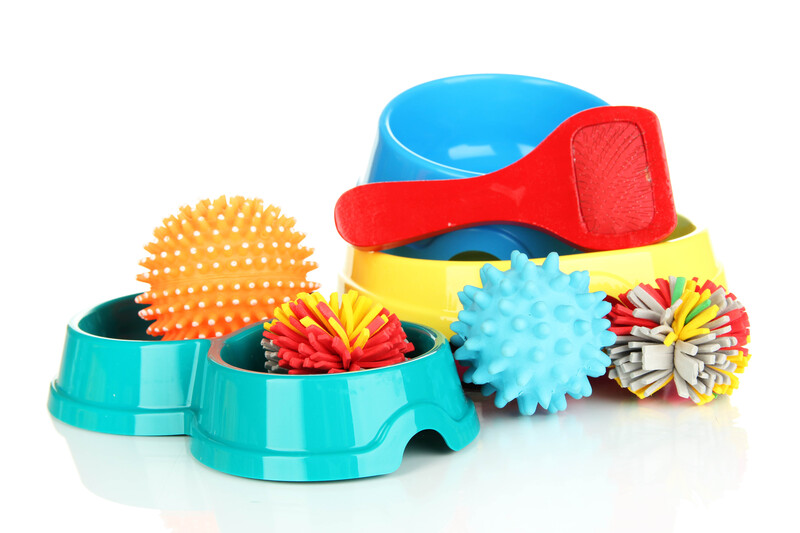Avoid Sagging and Fading: The Do's and Don'ts of Storing Your Sofa
When you decide to put your sofa into storage--whether due to moving, redecorating, or downsizing--it's essential to protect your investment. Improper storage can lead to sagging cushions, faded fabric, mold, mildew, and even structural damage. To help you preserve your sofa's comfort and aesthetics, we've compiled the ultimate, search-optimized do's and don'ts of storing your sofa. By following these tips, you'll ensure your couch emerges from storage as elegant and inviting as the day you tucked it away.

The Importance of Properly Storing Your Couch, Sofa, or Loveseat
Whether you have a contemporary sectional, a classic leather Chesterfield, or a simple loveseat, your sofa is a household focal point. Beyond its function as seating, it represents a significant financial investment and personal comfort. Storing your sofa incorrectly can result in:
- Sagging cushions that never regain their shape
- Fading upholstery from sun or heat exposure
- Musty odors caused by trapped moisture
- Mold and mildew, which can be health hazards
- Pest infestations attracted to dirty or unprotected materials
With so much at risk, understanding the do's and don'ts of storing your sofa is vital for any homeowner or tenant.
The Do's: Expert Tips for Storing Your Sofa Safely
1. Clean Thoroughly Before Storage
Never store your sofa dirty. Dust, crumbs, oils, and pet hair attract pests and can cause odors or stains over time. Follow these cleaning steps before sofa storage:
- Vacuum all surfaces, including under cushions and in crevices, using an upholstery attachment.
- Spot clean stains with a fabric-safe cleaner. Always test a small area first.
- Wipe down any wooden or metal parts with a gentle, non-abrasive cloth.
- Let it dry completely before wrapping or storing to avoid trapped moisture.
2. Disassemble if Possible
If your sofa can be safely disassembled--such as removing legs, arms, or cushions--do so. This reduces the risk of breakage or deformation and makes the unit easier to move and store.
- Store screws and hardware in a labeled zip-lock bag and tape it underneath a main frame component.
3. Use High-Quality Sofa Covers or Blankets
Plastic wrap is not always the best choice. It can trap humidity and encourage mildew. Instead, use:
- Breathable fabric covers
- Heavy moving blankets
If plastic is used, leave gaps for airflow or use it only as an outermost layer. This helps prevent moisture build-up, which is the number one culprit of couch sagging and mold during storage.
4. Choose the Optimal Storage Environment
The biggest enemies of stored furniture are extreme temperatures and humidity. Climate-controlled storage units are ideal for maintaining consistent temperature and humidity levels, reducing risks of:
- Fabric fading due to sunlight
- Wood warping or cracking
- Mildew growth in damp conditions
If climate control isn't possible, choose the driest, coolest location you can access--never store your sofa in a damp basement or non-insulated garage.
5. Elevate Your Sofa Off the Floor
Placing your sofa directly on a storage unit floor invites problems like moisture absorption from concrete or flooding. Elevate your sofa using:
- Wooden pallets
- Sturdy blocks
- Plastic risers
This prevents contact with cold or wet flooring--vital for avoiding sagging and mold.
6. Position Sofa Upright and Leave Space
Unless instructed by the manufacturer, always store your sofa in its natural, upright position. Never tip on its back or sides, as this stresses joints and warps frames--leading to unsightly sagging and permanent deformation.
- Leave several inches between your sofa and walls for airflow.
- Don't stack heavy items on top to avoid crushing cushions or frames.
7. Store Cushions Separately
Cushions are vulnerable to becoming misshapen or compressed during storage. To prevent sagging and ensure a plump, uniform look when you retrieve your sofa:
- Remove cushions and store upright on their edges.
- Wrap individually in breathable coverings.
- Consider periodically fluffing them if storing for extended periods.
8. Add Moisture Absorbers and Pest Deterrents
Storage units are prone to humidity and pest problems, which could cause mold on your sofa or attract insects and rodents. To safeguard against these risks:
- Place desiccant packs, silica gel, or dehumidifiers near your sofa.
- Use natural repellents like cedar blocks or lavender sachets to ward off pests.
9. Inspect Regularly If Possible
If your storage situation allows, check on your sofa every few months. Look for:
- Condensation on wraps or covers
- Signs of fading, pests, or mildew
- Sagging or compression in cushions
Regular inspections let you catch small issues before they become major headaches.
The Don'ts: Common Mistakes That Cause Sagging & Fading in Stored Sofas
1. Don't Store Your Sofa Dirty
Any residue left on the sofa prior to storage can set into permanent stains, attract bugs, and accelerate wear. Always clean your sofa thoroughly before storing.
2. Don't Wrap Your Sofa Too Tightly
While it's important to protect surfaces, winding wrap too tight can crush the padding and upholstery. This leads to:
- Cushion sagging
- Distorted armrests or legs
- Trapped moisture that encourages mildew
Use soft materials with a gentle fit and avoid compressing the sofa.
3. Don't Expose Your Sofa to Sunlight or Heat
The fastest way to a faded sofa? Prolonged exposure to sunlight or even artificial heat sources. Sunlight will bleach fabrics, dry out leather, and cause discoloration. Choose a shaded, temperature-stable location every time.
4. Don't Use DIY Storage Units with Poor Insulation
Cheap, uninsulated sheds, garages, or attics generally lack temperature control, making furniture storage a risky gamble. Cold, heat, and humidity fluctuations can:
- Crack or warp wood frames
- Encourage fabric fading
- Cause mustiness or mold
Invest in professional, climate-controlled storage if storing your couch long-term.
5. Don't Pile Belongings on Your Sofa
Whether it's boxes, books, or other furniture, never use your stored sofa as a shelf. The weight can crush cushions, risk torn springs, and create permanent indentation--the worst type of sagging imaginable.
6. Don't Ignore Signs of Trouble
If you notice odors, dampness, or visible pests when checking your storage, don't delay. Trim away any affected materials, air out your storage space, and address leaks or infestations promptly to save your sofa from permanent damage.
Sofa Storage Solutions for Different Upholstery Types
Fabric Sofas
- Vacuum and steam clean to remove allergens and stains.
- Use only breathable covers to avoid mustiness.
Leather Sofas
- Apply leather conditioner before storage to prevent drying and cracking.
- Wrap in cloth (never plastic) to let the leather breathe.
- Maintain stable humidity to avoid mildew and peeling.
Microfiber
- Brush out dirt with a soft-bristle tool.
- Cover with a lint-free fabric wrap for dust protection.
Wooden-Framed Sofas
- Treat with wood polish to shield against humidity.
- Avoid direct wraps that trap moisture.
Frequently Asked Questions: Storing Sofas and Preventing Damage
What's the best way to store a couch for the long-term?
Always choose a climate-controlled space, clean thoroughly beforehand, and use breathable covers. Separate and wrap cushions, elevate the sofa, and never place heavy items on top.
Can I store my sofa in my garage?
Only if your garage is insulated, dry and climate-controlled. Otherwise, fluctuations in temperature and humidity will cause fading, sagging, and higher risk for mold.
Is it okay to wrap my sofa in plastic for storage?
Plastic traps moisture, leading to mildew and odor. Use breathable blankets first; use plastic only as an outer, short-term protective layer, not as the sofa's only cover.
How can I prevent my couch from sagging in storage?
- Remove and store cushions upright
- Avoid stacking items on your sofa
- Keep your sofa elevated and in its natural position
What should I do when removing my sofa from storage?
- Allow it to air out before use
- Vacuum and, if needed, clean the upholstery
- Check for pests, odors, or damage
- If cushions seem compressed, fluff them or let them rest upright to regain shape

Expert Insights: Why Sagging and Fading Happen
Understanding the main causes of outlet furniture sagging and fading will help you avoid them. Sagging typically comes from compression (heavy weights, improper stacking), gravity (storing at odd angles), and internal moisture weakening the cushion filling. Fading is almost always due to direct or indirect sunlight, excessive heat, or chemical exposures.
By following the do's and don'ts of couch storage, you'll best preserve:
- The resilience and bounce of your sofa cushions
- The vibrant color and feel of your upholstery
- The integrity of the sofa frame and components
Takeaway: Protect Your Investment with Smart Storage
Storing a sofa, couch, or loveseat is more than simply tucking it away--it's about safeguarding comfort, style, and value for the future. Adopt the best practices outlined above and you can avoid both sagging and fading when storing your sofa. That ensures your favorite seat stays beautiful and cozy, ready to enjoy wherever life takes you next.
Remember: Proper sofa storage protects against sagging, fading, and costly repairs. Follow these tips and your sofa will be as inviting in the future as it is today!



